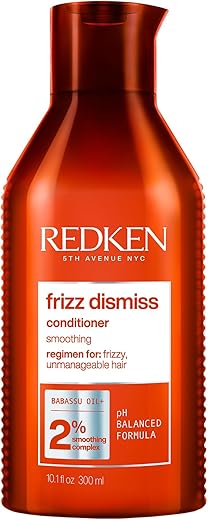
Tame the Mane: Top Conditioners Compared for Thick, Coarse Hair
Tame the Mane: Why the Right Conditioner Matters
Thick, coarse hair needs more than a standard conditioner. Its dense strands and raised cuticles resist moisture, tangle easily, and frizz in humidity. The right conditioner softens, smooths, and helps manage bulk without making hair limp.
This guide compares rinse-out, deep treatments, leave-ins, and co-washes, plus the ingredients that help or hurt. We evaluate performance, formulations, cost, and real-world use. Expect practical, science-backed tips and straightforward routines to soften, detangle, nourish, and reduce frizz.
Whether you seek long-term health, easier styling, or immediate smoothness, this article helps you pick conditioners that deliver results for coarse textures everyday and special-care needs.

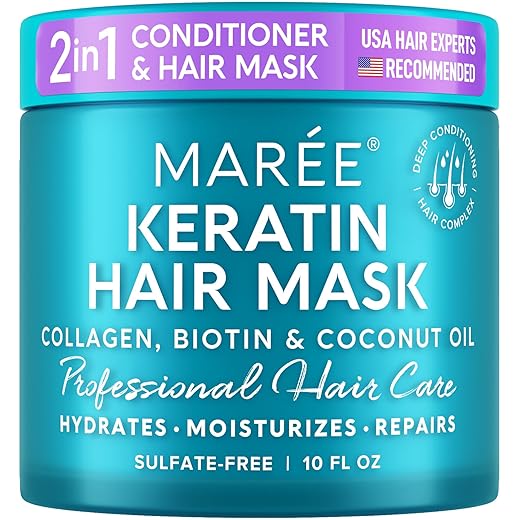

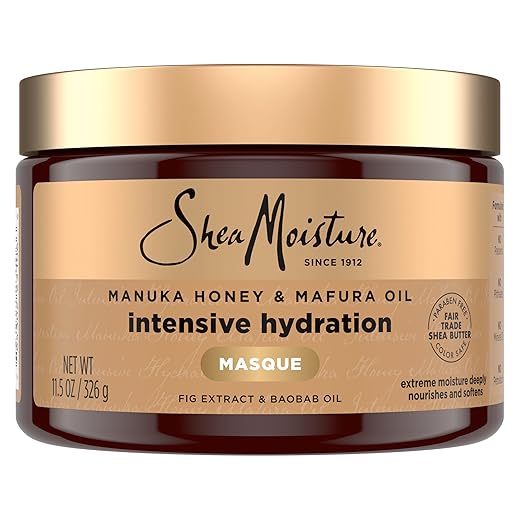
Top 10 Best Conditioners for Healthier Hair — Follow for More!
What Makes Hair Thick and Coarse: Anatomy, Behavior, and Common Challenges
Strand structure: diameter, cuticle, porosity, density
Thick (large-diameter) and coarse (wide, rigid feel) are related but not identical. A single coarse strand is bigger in circumference, often with more cuticle layers that sit rougher and open more easily. Density—how many strands per square inch—adds bulk: high density + coarse strands = truly voluminous, hard-to-manage hair. Porosity (how readily the shaft absorbs and releases moisture) ranges from low to high and governs whether products soak in or sit on the surface.
Quick practical test: drop a clean strand in water. Sinks slowly → high porosity; floats → low porosity. That simple check predicts how aggressively you need to condition.
Daily problems and practical implications
Thick, coarse hair commonly presents:
These issues explain why salon favorites differ: Olaplex No.5 helps rebuild bonds after bleaching, while SheaMoisture Raw Shea is rich enough to detangle and soften dense curls.
What changes hair traits: genes, environment, and damage
Genetics and ethnicity largely set natural strand width and curl pattern. Climate matters: dry cold air increases porosity and static; humid climates lift cuticles and spike frizz. Chemical services (bleach, relaxers) and repeated heat break down disulfide bonds and thin cuticle layers, shifting low-porosity hair to high-porosity and making routine conditioners ineffective.
Actionable tip: match product weight and actives (humectants + emollients for high porosity; mild heat and lightweight oils for low porosity) rather than grabbing a “moisturizing” bottle at random.
Ingredients That Work: What to Look for and What to Avoid
Humectants that actually penetrate
Humectants draw and hold water in the shaft — essential for thick, coarse hair that struggles to stay hydrated. Look for glycerin and hyaluronic acid (or sodium hyaluronate): they attract moisture without the sticky film some sugar alcohols leave. In humid climates glycerin shines; in dry climates use it with occlusives to lock that moisture in.
Rich emollients and restorative oils
Emollients soften rough cuticles and make detangling easier. Shea butter, coconut oil (use judiciously if you’re low-porosity), argan oil and jojoba mimic natural lipids and smooth fibers. These ingredients reduce friction, cut drying time, and make styling more manageable — think of them as the slip that lets a wide-toothed comb glide through thick curls.
Occlusives and silicones for sealing and smoothing
Occlusives like dimethicone and hydrogenated vegetable oils form a protective layer that flattens lifted cuticles and slows moisture loss. Dimethicone is particularly good for humidity resistance and heat protection; prefer formulas with water-soluble silicones if you clarify less often.
Strengthening proteins — use them smartly
Hydrolyzed keratin, silk protein, and quinoa protein can temporarily repair gaps in the cortex and add tensile strength. Too much protein (or frequent use on low-porosity hair) makes strands stiff and prone to snap — alternate protein treatments with rich, moisturizing masks.
Ingredients to avoid or use with caution
Fragrance, preservatives and sensitive scalps
Fragrance is the most common irritant; if your scalp itches, choose fragrance-free. Preservatives like parabens are debated, but modern alternatives (phenoxyethanol) are generally safe in the concentrations used — patch-test when in doubt.
Next up: how these ingredients are delivered — rinse-out conditioners, deep masks, leave-ins and co-washes — and which format suits your hair goals.
Conditioner Types and Their Roles: Rinse-Out, Deep Treatments, Leave-Ins, and Co-Washes
Rinse‑out conditioners — daily detangling and smoothing
Rinse-out conditioners are your go-to after shampooing to restore slip and close the cuticle. For thick, coarse hair choose richer, creamier formulas (look for “intense” or “for dry hair” labels).
How to use: apply from mid-lengths to ends, leave 1–3 minutes, detangle with a wide-tooth comb, then rinse. Use at every wash to reduce breakage and speed drying. Examples: salon-grade slip conditioners or drugstore hits like Aussie 3 Minute Miracle for a quick boost.
Deep treatments & masks — weekly intense moisture and repair
Masks deliver concentrated oils, butters and proteins to rebuild and saturate thick strands. Use a deep mask once a week, or every 7–14 days if chemically processed or frequently heat-styled. Leave times vary: 10–30 minutes (or overnight for very dry hair under a cap). Heavier formulas work best — think butter-rich textures rather than lightweight creams.
Leave‑in conditioners — daytime control and protection
Leave-ins tame frizz, add manageability, and act as a base for heat protection. For coarse hair, pick a creamy leave-in or a cream/serum hybrid; apply to damp hair focusing on mid-lengths/ends. Start with a nickel-to-quarter-size amount and adjust. Reapply sparingly to dry hair for frizz touch-ups.
Co‑washes — low-lather cleansing that preserves moisture
Co-washes substitute shampoo for gentle cleanses on non-heavy-product days or between color-safe washes. Use them when your scalp isn’t greasy or after workouts that didn’t involve heavy styling products. They reduce stripping but won’t remove heavy buildup — alternate with a clarifying shampoo monthly.
How to alternate and layer
Next, we’ll walk through matching these formats to specific hair goals and damage profiles so you pick the right combination.
Match the Conditioner to Your Specific Hair Goals and Conditions
Quick decision checklist — pick by goal
When you know the primary outcome, the choice gets simple:
If your hair tangles after a humid commute, prioritize smoothing and anti-humidity ingredients; if it snaps when you brush, choose a protein-enriched formula.
Match by porosity
Use a simple water test (strand sinks quickly = high porosity) to guide choices.
Texture and treatment modifiers
Short profile recommendations
Next up: we’ll explain exactly how we tested these attributes — performance, ingredient integrity, cost, and real-world usability — so you can compare products side-by-side.
How We Compare Conditioners: Performance, Ingredients, Cost, and Real-World Use
Assessment criteria we use
We score each conditioner across practical, user-facing metrics so you can see strengths at a glance:
How we test — real-world, repeatable methods
We subject formulas to hands-on lab-style and at-home routines to mimic real use:
How top picks are organized for quick choice
We’ll present winners by user need so you can jump straight to the right solution:
Next, you’ll see the top-rated conditioners in each category with notes on who they suit and how to use them in your routine.
Application Tips, Routines, and Troubleshooting to Maximize Results
How to apply — step by step
Heat-assisted and timing tips
Warmth helps penetration: cover treated hair with a plastic cap and sit under a steamer or wrap a warm (not hot) towel for 10–20 minutes for deep masks. Rinse-out conditioners: 1–3 minutes is usually enough; masks: 10–30 minutes based on instructions.
Frequency guide
Troubleshooting common problems
Quick at-home checks:
Between washes & seasonality
Seal moisture with a light oil or butter, use silicone-free heat protectants when styling, and switch to richer treatments in winter or after chemical services. After a relaxer/color service, space protein and deep-moisture sessions to rebuild without overloading.
Next, the Conclusion will give practical next steps to find the right conditioner for your mane.
Find the Right Conditioner — Practical Next Steps
Identify your hair profile first (porosity, density, breakage, scalp needs). Prioritize conditioners with the right ingredients — humectants and oils for dryness, proteins for weakness, silicones or emollients for smoothing — and choose the type that matches your goal: a deep mask for severe dryness, a leave-in for daily manageability, or a co‑wash for gentle cleansing. Apply consistently and use the techniques above (sectioning, heat, timing) to maximize absorption.
Start with one targeted product category, track changes for 3–6 weeks, and tweak one variable at a time. Small routine adjustments often yield big improvements — stay patient and let the better conditioner do the work.

Hello! I’m Ava Wilson, a passionate advocate for healthy, beautiful hair. With years of experience in the hairstyling industry and a deep-rooted love for all things hair, I’ve made it my mission to share valuable insights and expert tips on nurturing and styling locks.




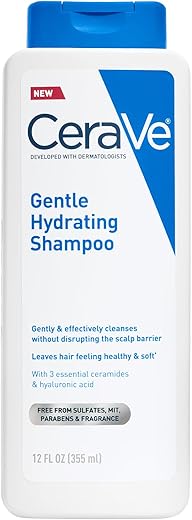
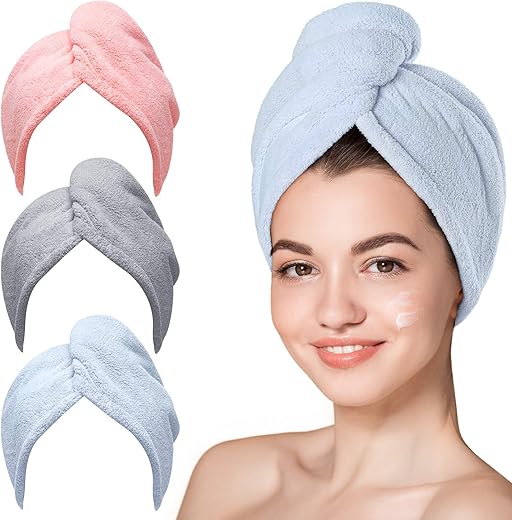
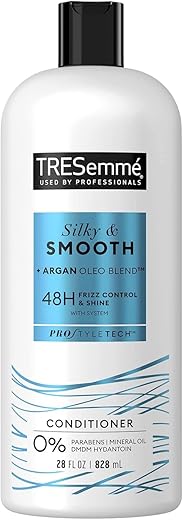
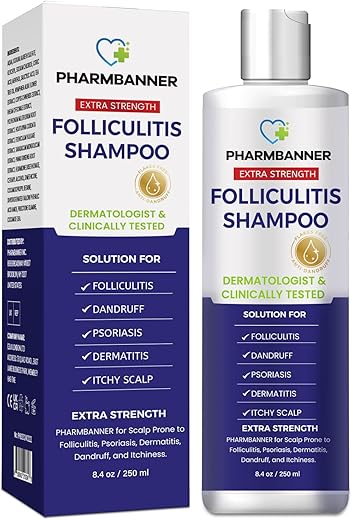

Throwing this out there — postpartum hair changed EVERYTHING for me. My once-manageable thick hair became coarse and unruly. The article’s routine tips helped me—especially the “apply conditioner focusing on ends and detangle in-shower” advice.
I’ve been alternating SheaMoisture Manuka Honey and MAREE Keratin masks and doing Creme of Nature leave-in. It’s slowly coming back.
Anyone else dealing with hormonal texture changes? Any specific routines that helped?
Same here postpartum — what worked for me: sulfate-free shampoo, weekly deep hydration masque (SheaMoisture), and a lightweight leave-in. Also sleep on a silk pillowcase and use a loose braid to reduce friction.
So glad the routine tips helped, Zoe. Hormonal changes can alter porosity and oil production — gentle routines, less frequent washing, and focusing on moisture while reintroducing protein slowly usually helps. If scalp is oily but ends are dry, consider co-washing between shampoo days.
If you’re concerned about significant hair loss or abrupt texture changes, it’s worth checking with a doc to rule out nutrient deficiencies or thyroid issues — but for many, targeted haircare routines bring improvements over weeks.
Tried Redken Frizz Dismiss because the name sold me. Smelled great, but felt like it made my hair flatter and kinda weighed it down. Maybe I’m using too much? 🤷♂️ lol
Anyone else get that? Also, is Redken better for humidity fighting than Biolage or is that just marketing?
Sounds like product buildup or too large an application — thick hair often needs product concentrated on mid-lengths/ends, not roots. Redken is formulated for frizz control so it can feel heavier; Biolage Ultra Hydra tends to be a bit lighter. Try smaller amounts and see if it helps.
Pro tip: after rinsing the Redken, finish with a cool water rinse and do a light microplop with a microfiber towel — reduces frizz and cut down on product seeming “heavy.”
I had the same with Redken — great anti-frizz but heavier. Switched to using a pea-size amount and only on ends and it improved. If you want humidity control without weight, try using a light leave-in or a silicone-free anti-frizz serum.
If humidity is your main enemy, pair a frizz control conditioner with a silicone-based serum (tiny amount) to block moisture penetration. But if you avoid silicones, look for polymers or botanical alternatives mentioned in the ingredients section.
Big fan of the SheaMoisture Manuka Honey masque — been using it once a week for about 3 months and my coarse ends actually feel… softer? Wild.
I liked how the article broke down the ingredients to look for (humectants + lightweight oils) because that helped me stop buying heavy silicone bombs.
One tip that worked for me: apply the masque mid-lengths to ends, wrap in a warm towel for 20–30 mins, rinse with cool water. Game changer.
Would love a quick list of “what to pair” with the masque as a rinse-out conditioner for daily use — any thoughts?
Quick note: if your hair responds well to keratin, the MAREE Keratin Deep Conditioning Mask or the Hydrolyzed Keratin Plant Protein Repair Mask are solid alternatives for repair-focused weeks.
Yep! I do the same combo — Biolage on wash days, SheaMoisture weekly. Also sometimes add a few drops of argan oil (not too much) on damp ends before styling. Keeps frizz at bay without greasiness.
Thanks for sharing your routine, Michael — love the warm towel trick. For pairing, people often use a lightweight daily conditioner like Biolage Ultra Hydra Source for Thick Hair as the rinse-out, then the SheaMoisture masque once a week. That combo keeps weight down while boosting hydration.
Loved the ingredients section — finally something that calls out what to avoid.
Long version: my hair got brittle after months of heavy silicones + too much protein. The article’s note about balancing humectants (glycerin, honey) with emollients (shea, argan) and occasional protein was clutch.
I switched to the Hydrolyzed Keratin Plant Protein Repair Mask for monthly protein and otherwise use Arvazallia and lightweight oils. Hair feels stronger but not crunchy. Highly recommend reading that “what to avoid” part carefully if you’re reactive to protein/silicones.
Great breakdown, Olivia — exactly the balance we aimed to highlight. Monitoring your hair’s response after a protein treatment (elasticity test) can help avoid overdoing it.
This is gold — I ignored the balance concept and ended up with straw-like ends. Switched to alternating protein and moisture masks, and my hair recovered in a couple months.
Question — I have thick, coarse hair and I’m torn between getting a leave-in detangler (Creme of Nature Pure Honey Leave-In) vs doing weekly deep masks (like Arvazallia Argan Oil or the Hydrolyzed Keratin masks).
Which one should I prioritize? Can I do both without overloading my hair?
I do both — leave-in every wash day, deep mask every other week. My trick: if you use a protein-heavy mask (hydrolyzed keratin), alternate with a moisture masque like SheaMoisture so you don’t get protein overload.
Good Q. Prioritize a leave-in for daily manageability — it helps detangle and protect. Deep masks are for repair/hydration and can be used weekly or biweekly depending on porosity. Doing both is fine as long as you use light amounts of leave-in and rinse/mask on separate days.
I’m kinda skeptical about co-washes — feels like skipping the clean part of ‘cleaning’. Article made a decent point that co-washes can be great for thick/coarse hair if you avoid buildup.
Tried Biolage Ultra Hydra Source a few times and my hair felt slick but not gross. Anyone have simple rules for when to co-wash vs when to shampoo?
Good skepticism. Rule of thumb: co-wash on non-product-heavy days or when hair needs moisture but not a clarifying reset. If you use lots of styling products or silicones, use a gentle sulfate-free shampoo occasionally to remove buildup.
I do co-wash between shampoos — shampoo once a week, co-wash midweek if my scalp isn’t greasy. Keeps moisture without turning my hair into a greasy mess.